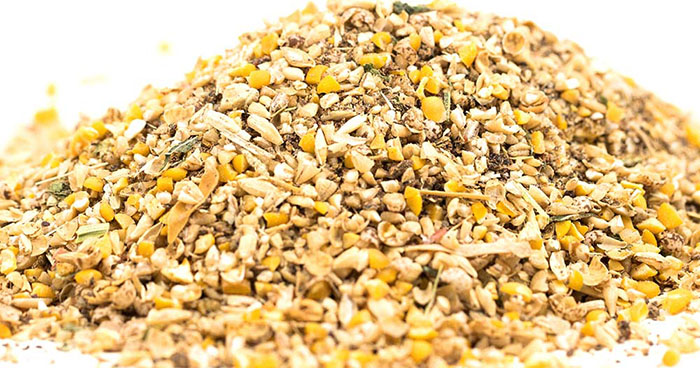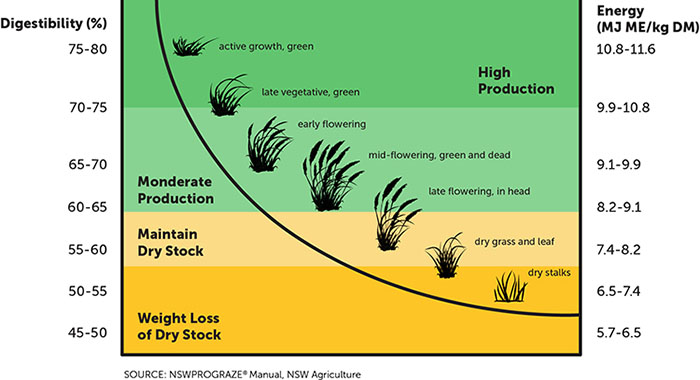Winning The Battle Against Fibre
As we hit December grass is maturing and so the battle against high fibre has begun. It has been said that one of the biggest impediments to maximizing profits during summer in a pasture based dairy system is an excess of fibre in the diet. This is due to the relationship between fibre and intake. Put simply, fibre limits intake and maximizing intake is a key driver of feed conversion efficiency.

The average dairy cow can eat about 1.2% of her body weight in Neutral Detergent Fibre (NDF) each day. This basically dictates the amount of food that the cow can consume and digest over a 24-hour period. There are plenty of other drivers of dry matter intake, but this is a great rule of thumb.
If you are starting with forage with an NDF over 60% such as late silage, hay or straw, you will need to balance this with a lower fibre supplement like grain or pellets (10% – 20% NDF) or a summer crop to get the average down to the optimum level of 30 – 35%. Even high quality pasture may already be over 45% NDF in early summer. While you won’t need to feed as much low NDF feed to bring the overall diet down compared to feeding conserved fodder, extra low fibre feed will still be required to hold production compared to in spring when the grass fibre levels may have been up to a third lower.
Ultimately, the more fibre in the diet, the more grain, pellets or crop needs to be fed to balance this fibre in order to maintain production.
Protein, energy, palatability, mineral availability and digestibility of the pasture all decrease as the plant cells mature and fibre increases. The bugs in the rumen need more nutrients to digest the higher fibre feed but actually receive less. The result is that digestion slows, dry matter intake decreases, available nutrient supply dries up and the cow’s milk production crashes. Below you can see what is happening to your pasture.
If you are unsure of your fibre percentage in your cow’s total diet, please contact your field rep. We can come out and complete a feed budget with you. As mentioned on the previous page, a cow feed budget can give you a clear and accurate summary of your current diet allowing us to make the relevant changes to your ration so you get the best bang for your buck. There are also additives that we can put in your ration to help the rumen bugs digest the fibre which will increase your dry matter intake, contributing to keeping the litres in the vat.
Not all rumen bugs are capable of digesting fibre so the key to ensuring good fibre utilisation is to create an environment that suits fibre digesting microorganisms. These bugs need protein, a stable pH (buffering) and specific vitamins and minerals. The addition of feeds high in fats and oils can make life hard for fibre digesting micro-organisms.
To this end Reid Stockfeeds have put together a Fibre Enhancer Mix to help optimise the utilisation of fibre. It is combination of additives that are all known to enhance digestion of fibre and can be added to any Reid Stockfeed product.
We have formulated this mineral pack to be fed at 100 grams per cow per day costing around 16 cents. It contains enough protein to produce around an extra half a litre of milk (if protein is limiting production) over and above the benefits of aiding fibre digestion. It also contains macro and micronutrients specifically tailored to high fibre diets and South West Victorian summer conditions and an S6 rumen modifier that helps to create a better environment for the microbial organisms that digest fibre.
